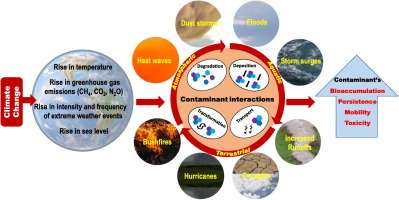
Key Contributor to Climate Change
It is clear that human activities are the foremost driver of contemporary climate change. By burning fossil fuels and transforming land on a massive scale—especially through the conversion of forests into farmland—humans have significantly disrupted the natural composition of the atmosphere and ecosystems. Since the onset of the Industrial Revolution, human civilizations have hastened the burning of coal, oil, and natural gas to support growth and technological advancement. This practice emits vast quantities of carbon dioxide (CO2), one of the key greenhouse gases contributing to the planet’s warming.
The Greenhouse Phenomenon
Greenhouse gases such as CO2 trap heat within the atmosphere, resulting in the “greenhouse phenomenon.” This mechanism warms the Earth’s surface in a manner similar to how a greenhouse retains heat internally. Although this phenomenon occurs naturally and is vital for sustaining life on Earth, the human-induced buildup of greenhouse gases has significantly amplified this effect, contributing to global warming. A particularly troubling aspect of CO2 is its enduring presence in the atmosphere—it can linger for centuries, leading to prolonged warming of the Earth’s surface over time.
Other greenhouse gases, including methane (CH4) and nitrous oxide (N2O), also significantly impact climate change. These gases are frequently produced as by-products of industrial operations, agricultural practices, and waste management activities. While certain pollutants, such as aerosols, can produce short-term cooling effects by reflecting sunlight from the Earth, the overarching trend driven by the accumulation of greenhouse gases is one of considerable warming.
Defining Climate Change
Climate change denotes a prolonged alteration in global or regional climate patterns, typically reflected in shifts in temperature, precipitation, wind patterns, and the occurrence of extreme weather events like droughts and floods. Although the Earth’s climate has historically experienced variations, the pace and scale of current transformations are unparalleled in the context of human history.
Contemporary climate change is primarily influenced by variations in Earth’s energy balance, a delicate state between incoming solar energy and outgoing heat. Disruption of this balance—whether through natural forces or human interventions—causes climate alterations. While various natural elements have shaped the Earth’s climate throughout geological history, the effect of human actions since the Industrial Revolution has emerged as the primary influence driving current climate patterns.
Natural Influences
Although human activities are the leading cause of present-day climate change, natural factors also play a role in influencing the Earth’s climate over extensive periods. These natural elements include volcanic activity, fluctuations in solar output, and changes in the Earth’s orbit. For example, volcanic eruptions can release particulates and gases into the atmosphere, occasionally causing short-term cooling by reflecting sunlight away from the planet. Likewise, slight variations in solar radiation may impact climate trends, although their effect on recent warming pales in comparison to human-generated emissions.
Internal natural climate variability, such as alterations in ocean currents or atmospheric circulation patterns, also influences climate over shorter durations. These occurrences lead to temporary changes in weather and climate but do not explain the long-term warming trends observed in recent years.
Human-Induced Factors
Human actions have significantly transformed the Earth’s atmosphere and land surface, leading to an expedited pace of climate change. The most crucial human-related factor is the combustion of fossil fuels—like coal, oil, and natural gas—which emits substantial amounts of CO2 and other greenhouse gases. Moreover, widespread deforestation diminishes the planet’s ability to sequester and store CO2, further intensifying global warming. Changes in land use for farming, urban development, and industrial activities also modify the Earth’s albedo—or reflective capability—contributing to localized temperature rises.